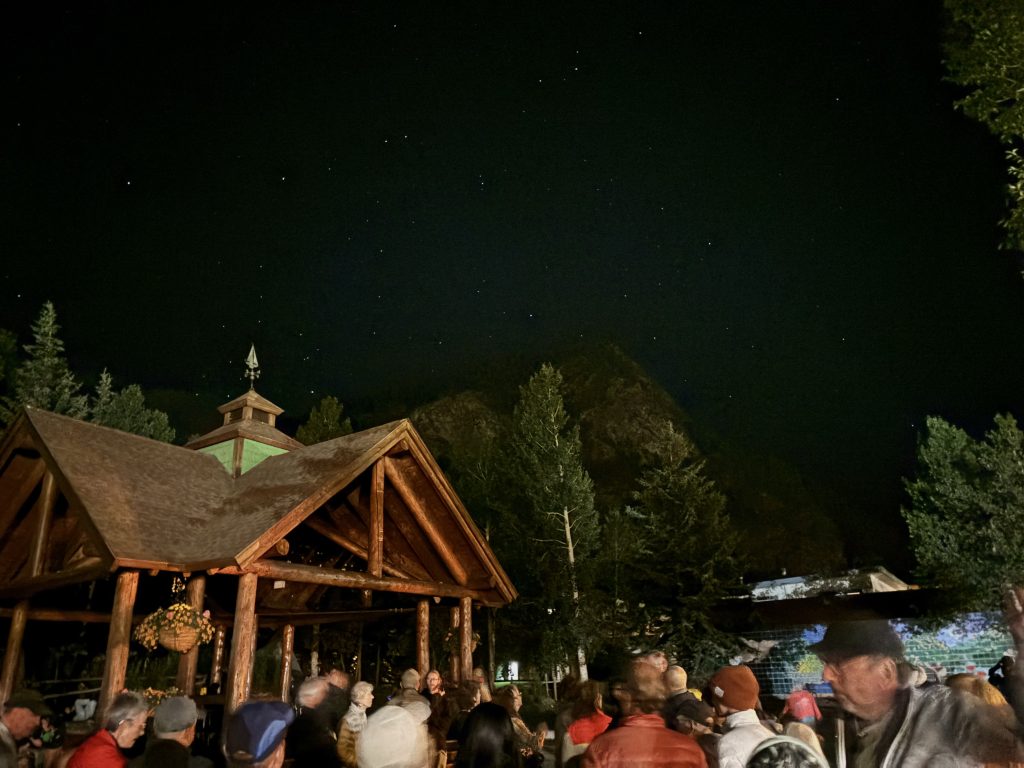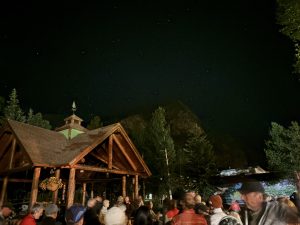Epsilon Perseids meteor shower offers Colorado stargazers one last chance to see shooting stars before summer’s end
The autumnal equinox occurs in September, marking the end of summer, but there are still several opportunities to view astronomical phenomena

Ryan Spencer/The Aspen Times
As the nights grow chillier, there is still time for Colorado stargazers to observe a meteor shower and other celestial events before summer ends and winter conditions make nights less enjoyable.
Astronomy guide and Summit County resident Mark Laurin — better known as Astro Mark — wrote in his September stargazing blog that, with the days growing shorter, the nights are growing longer and the stars are coming out earlier.
“We’re in a stargazer’s sweet spot,” Laurin wrote. “The September sky is full of magic. Plus, you’ll find the night air is still comfortable but with a mere hint of wispy chill occasionally passing through.”
The autumnal equinox will occur this month. Stargazers should also keep an eye out for shooting stars during the Epsilon Perseids meteor shower, as well as look for the conjunction of the moon and Jupiter and mark their calendars for a special opportunity to see Saturn, Laurin said.
“September ushers (in) the beginning of the season of harvest, fulfillment, and gratitude. It is the month which straddles the final season of growth and the beginning season of harvest,” Laurin wrote. “And thus it is so with our September night sky. A sky rich, full of delightful objects to view and events to observe. Get out and look up any pleasant night this month. The cosmos awaits.”
Epsilon Perseids meteor shower
While the Epsilon Perseids meteor shower produces fewer meteors overall compared to the Perseids meteor shower that occurred in August — which is one of the best of the year — it is still an opportunity to see shooting stars, Laurin said.
A meteor, often referred to as a “shooting star,” is the bright streak of light seen when a small piece of space debris burns up in the atmosphere. A meteor shower occurs when the Earth’s orbit passes through a stream of debris left by a comet or asteroid, causing a shower of shooting stars as the debris burns up in the atmosphere.
The Epsilon Perseids meteor shower will peak Sept. 9. Unfortunately, Laurin noted that it will be justt two days after the full moon, so the brightness of the moon will wash out the visibility of fainter shooting stars. But, “do not despair,” he said, because the meteor shower is anticipated to be visible until Sept. 21 and has “a history of being unpredictable.”
To find the meteor shower, look north-west any time after sunset and scan a large swath of the sky above the horizon, Laurin said.
Interestingly, astronomers don’t know exactly what parent comet or asteroid produces the debris trail that creates the Epsilon Perseids meteor shower, but it is thought to be a “long period comet” with an orbital period around the sun of more than 200 years, Laurin said.
Conjunction of moon and Jupiter
On Sept. 16, an astronomical conjunction will occur between the moon and Jupiter, Laurin said. An astronomical conjunction occurs when two astronomical bodies appear close to one another and share the same east to west “ascension,” or arc, through the sky as observed from earth, he said.
Around 1:30 a.m. Sept. 16, the crescent moon will rise over the east-northeast horizon with Jupiter prominently in tow, Laurin said. Jupiter will have an off white, yellow-golden hue and, unlike stars, it will not twinkle.
Saturn in opposition
On Sept. 20, Saturn will be in “opposition” with the Earth, meaning the sun, Earth and Saturn will be in alignment with Earth in the middle, Laurin said. During this “special event,” he said, “you can expect Saturn to be boldly illuminated and thus prime for viewing.”
Saturn will rise around the time the sun sets and will set in the west around the sun rises in the east the next day, reaching its high point in the sky around midnight. To spot Saturn, look for a bright brownish-green planet in the constellation Pisces, Laurin said, noting “the key is to look for a pinprick of light that isn’t twinkling.”
“While you will see Saturn with your naked eye, even a small telescope or binoculars at low power will reveal much more,” Laurin said. “Don’t miss your chance to see the sixth planet in our solar system, the Roman God of agriculture, up close and personal.”
Autumnal equinox
In the northern hemisphere, the autumnal equinox — which marks the end of the summer season and the beginning of autumn — will occur Sept. 22 at 12:20 p.m., Laurin said.
During the autumnal equinox, the sun rises directly in the east and sets directly in the west, and spends roughly equal amounts of time above and below the horizon, “no matter where you are in the world,” Laurin said.
Details released surrounding Aspen’s Castle Creek Road bike death
A 64-year-old woman was involved in a bicycle accident on Castle Creek Road that resulted in her death on Monday.










